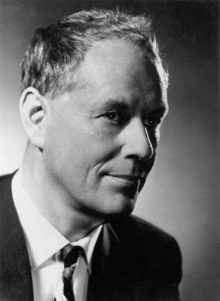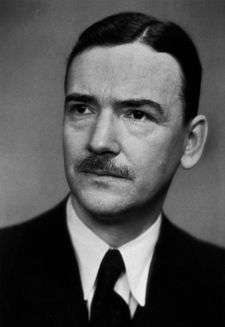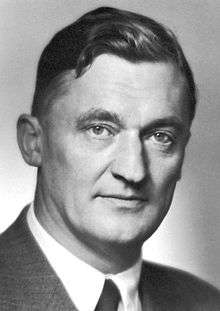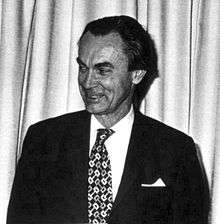Karolinska Institutet
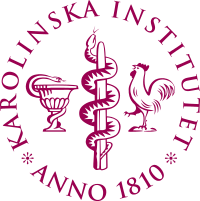 | |
Former names |
Kongl. Carolinska Medico Chirurgiska Institutet (1817-1968) |
|---|---|
| Motto | Att förbättra människors hälsa (Swedish) |
Motto in English | To improve human health |
| Type | Public |
| Established | 1810 |
| Endowment | 576,1 million EUR (2010) |
| Budget | SEK 6.2 billion[1] |
| Vice-Chancellor | Karin Dahlman-Wright [2] |
Administrative staff | 4,976 (2014)[1] |
| Students | 5,978 (FTE, 2014)[1] |
| 2,071 (2014)[1] | |
| Location |
Solna, Stockholm County, Sweden 59°20′56″N 18°01′36″E / 59.34889°N 18.02667°ECoordinates: 59°20′56″N 18°01′36″E / 59.34889°N 18.02667°E |
| Campus | Solna (Main) and Huddinge |
| Colors | KI Plum |
| Website |
www |
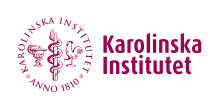 | |
Karolinska Institutet (KI, unofficially known as the Karolinska Institute[3] and in older English texts as the Royal Caroline Institute) is a medical university in Solna within the Stockholm urban area, Sweden, and one of the largest and most prestigious medical universities in the world. The Nobel Assembly at Karolinska Institutet awards the Nobel Prize in Physiology or Medicine. It consists of fifty professors from various medical disciplines at the university.
Karolinska Institutet was founded in 1810 on Kungsholmen on the west side of Stockholm; the main campus was relocated decades later to Solna, just outside Stockholm. A second campus was established more recently in Flemingsberg, Huddinge, south of Stockholm.[4] Karolinska Institutet consistently ranks among the top universities in the world on a number of prestigious ranking tables, and is currently considered the ninth best university to study medicine in the world.[5]
Karolinska Institutet is Sweden's third oldest medical school, after Uppsala University (founded in 1477) and Lund University (founded in 1666). Research at Karolinska Institutet accounts for more than 40% of all academic medical research in Sweden.[6]
The Karolinska University Hospital, located in Solna and Huddinge, is associated with the university as a research and teaching hospital. Together they form an academic health science centre. It is one of Sweden's largest centres for training and research, accounting for 30 percent of the medical training and 40 percent of the medical academic research conducted nationwide. While most of the medical programs are taught in Swedish, the bulk of the Ph.D. projects are conducted in English.
History[7]
The 19th century
1810 Karolinska Institutet is founded by King Karl XIII on 13 December 1810 as an "academy for the training of skilled army surgeons" after one in three soldiers wounded in the Finnish War against Russia died in field hospitals. "The medical skills of the army barber-surgeons are manifestly inadequate, so Sweden needs to train surgeons in order to better prepare the country for future wars."
1811 Karolinska Institutet is licensed to train not only surgeons but medical practitioners in general.
1813 As one of KI's first professors, Jöns Jacob Berzelius lays the foundations of KI's scientific orientation.
1816 The newly inaugurated institute is named "Carolinska Institutet" (in reference to the Caroleans[8]), a title that never really makes an impact. "Carolinska Medico Chirurgiska institutet", however, proves more popular, especially when preceded by the epithet "Kongliga" (Royal), as introduced in 1822. It is in connection with the student revolt of 1968 that the name is shortened to Karolinska Institutet, or KI as it is now commonly known. The original institute is situated in the Royal Bakery on Riddarholmen (a small but central island in Stockholm) and within a just a couple of years has four professorships affiliated to it in anatomy, natural history and pharmacy, theoretical medicine and practical medicine (internal medicine and surgery). Anders Johan Hagströmer is appointed the institute's first inspector, a post equivalent to today's president. Hagströmer is a professor of anatomy and surgery, with a background from the Collegium Medicum, the National Board of Health and Welfare of its day. This same year, the institute moves to the old Glasbruk quarter on Norr Mälarstrand, beside what is now the City Hall. The move across the waters of Riddarfjärden is made on barges, one of which is said to have capsized, consigning parts of Hagströmer's collection of preparations to the lake bed. His library survives intact, however, and today forms part of the KI-Swedish Society of Medicine book museum at KI's Hagströmer Library.
1861 The institute is awarded the right to confer degrees and is granted a status equal to that of a university.
1866 The old building on the Glasbruk plot is torn down and replaced by a new, larger one. The new institute is built in stages, mostly during the 1880s and into the first decade of the 20th century. The building stands to this day, and has remained largely unchanged since its erection.
1874 KI is licensed to confer medical degrees. Previously, even though the institute could run courses in medicine, the right to confer medical degrees was almost exclusively that of Uppsala University.
1875 The first doctoral thesis is defended at KI by Alfred Levertin, with his "Om Torpa Källa".
1877 The Medical Students' Union is formed.
1878 Stockholm University College is inaugurated, but without a medical faculty as Karolinska Institutet is already established as a separate medical institute in Stockholm.
1884 In May, Karolina Widerström is the first woman to obtain a bachelor's degree in medicine from Karolinska Institutet.
1888 In May, Karolina Widerström goes on to obtain a Licentiate degree in medicine from Karolinska Institutet, and chooses to specialise in women's medicine and gynaecology.
1895 Alfred Nobel's testament bequeaths Karolinska Institutet the right to select the Nobel Prize in Physiology or Medicine. Since then, this assignment has given Karolinska Institutet a broad contact network in the field of medical science. Over the years, five researchers from Karolinska Institutet have been awarded the Nobel Prize in Physiology or Medicine.
1897 The Institute of Dentistry is incorporated into Karolinska Institutet (becomes independent again in 1947).
20th century

_(2).jpg)
.jpg)
1900 Anna Stecksén is the first woman to obtain a doctoral degree from Karolinska Institutet. Her thesis is entitled: "Studie öfver Curtis blastomyocel - från svulst - etiologisk synpunkt".
1906 The first conferment ceremony takes place at KI.
1930 The Swedish parliament decides that a new teaching hospital is to be built on Norrbacka in Solna, with its theoretical and practical functions side by side. The chief architect is Carl Westman. The hospital is named Karolinska Hospital after a proposal by Karolinska Institutet.
1937 Nanna Svartz is appointed professor at Karolinska Institutet, becoming Sweden's first state-employed female professor. KI's departments for radiophysics and radiopathology move into the Radiumhemmet building on Norrbacka, the first building of the new Karolinska Hospital.
1940 The main Karolinska Hospital building reaches completion and is officially opened. The Department of Public Health, KI's first building in the hospital complex, also opens.
1945 KI moves in its entirety from Kungsholmen to the Norrbacka area in Solna, now KI's Solna Campus. Over 350 students take their PhD degree each year.
1955 Hugo Theorell becomes KI's first Nobel Laureate, receiving the Nobel Prize in Physiology or Medicine for his discoveries concerning the nature and mode of action of oxidation enzymes.
1959 The Stockholm Institute of Physiotherapy is incorporated into KI.
1964 The Speech Pathology and Therapy programme commences. The University College of Dentistry becomes an odontological faculty at KI. The future Huddinge Hospital is upgraded as a new teaching and research hospital, operating in partnership with KI.
1965 Astrid Fagréus becomes the second female professor at Karolinska Institutet. By now, KI has around fifty professors.
1967 Ragnar Granit is KI's second Nobel Laureate, receiving a Nobel Prize in Physiology or Medicine for his contributions to the analysis of retinal function and how optical nerve cells respond to light stimuli, colour and frequency. The medical information centre for computer-based citation research (MIC) is set up, making Karolinska Institutet the first MEDLARS CENTRE (Medical Literature Analysis and Retrieval System) outside the USA.
1970 Ulf von Euler is KI's third Nobel Laureate, receiving a Nobel Prize in Physiology or Medicine for his contributions for discoveries concerning the humoral transmittors in the nerve terminals and the mechanism for their storage, release and inactivation.
1972 Huddinge Hospital opens as a new university hospital. As more and more of Karolinska Institutet's departments start to move into the hospital buildings, the area is gradually developed to become what is today KI's Huddinge Campus.
1976 Sweden's first toxicology programme commences at KI.
1977 The Stockholm Institute of Physiotherapy closes, and the study programme is transferred to a new physiotherapy department at KI.
1979 The psychotherapy programme commences.
1982 Sune Bergström and Bengt Samuelsson become the fourth and fifth Nobel Laureates, receiving a Nobel Prize in Physiology or Medicine for their discoveries concerning prostaglandins and related biologically active substances. The NOVUM research centre is built in Huddinge, with the foundations for biotechnology, oral biology, nutrition and toxicology, and structural biochemistry.
1993 The KI93 reorganisation is implemented, which involves reducing 150 departments to 30. The dental technology programme commences.
1994 The optometry programme commences.
1995 Karolinska Institutet Holding AB is formed and the institute intensifies its relations with the business community. The biomedicine programme commences.
1996 Karolinska Innovations AB is formed to help scientists commercialise their own discoveries.
1997 Karolinska Institutet is granted official status as a university, with a mission to "contribute to the improvement of human health through research, education and information".
1998 The Stockholm University of Health Sciences is incorporated into KI, bringing with it seven new study programmes: occupational therapy, audionomy, midwifery, biomedical laboratory science, nursing, radiology nursing and dental hygiene. The public health science programme commences. The KI prospectus now comprises a total of 19 study programmes. There are also now three student unions: The Medical Students' Union, the Dental Students' Union, and the Physiotherapy Students' Union.
1999 The medical and odontological faculties are merged and a new three-board management organisation is introduced, with one board each for research, postgraduate education and higher education.
21st century
.jpg)
2000 Karolinska Education AB and Karolinska Research Services AB are formed.
2001 The medical informatics programme commences.
2004 Karolinska Institutet appoints its first female president – Harriet Wallberg-Henriksson, professor of integrative physiology.
2006 The podiatry programme commences. The one and two-year Master's programmes commence.
2007 The psychology programme commences.
2008 Karolinska Institutet's fundraising campaign, with its target of raising an extra 1 billion kronor for research between 2007 and 2010, passes the 600 million mark.
2009 King Carl XVI Gustaf consents to become the Royal Patron of the Karolinska Institutet bicentenary.
2010 Karolinska Institutet celebrates its 200th anniversary!
2013 Professor Anders Hamsten assumes his new position as vice-chancellor of Karolinska Institutet.
2016 Anders Hamsten resigns as vice-cancellor in the wake of the Macchiarini affair.[2]
The seal's symbolism

The rod of Asclepius
The rod of Asclepius is named after the god of medicine, Aesculapius or Asclepius. This ancient god was the son of Apollo and was generally accompanied by a snake. Over time, the snake became coiled around the staff borne by the god.
The snake bowl
The snake bowl was originally depicted together with Asclepius' daughter, the virgin goddess of health Hygieia or Hygiea. The snake ate from her bowl, which was considered to bring good fortune. There is nothing to support the notion that the snake would secrete its venom into the bowl.
The cockerel
The cockerel symbolises new life and was sacrificed to Asclepius by those who had recovered from illness. This is the meaning behind the Greek philosopher Socrates' last words after he drank the poisoned cup: "Crito, we owe a cock to Asclepius. Do pay it. Don't forget."
Education

Karolinska Institutet offers the widest range of medical education under one roof in Sweden. Several of the programmes include clinical training or other training within the healthcare system. The close proximity of the Karolinska University Hospital and other teaching hospitals in the Stockholm area thus plays an important role during the education. Approximately 6,000 full-time students are taking educational and single subject courses at Bachelor and Master levels at Karolinska Institutet.
Departments
- Biosciences and Nutrition
- Cell and Molecular Biology
- Clinical Neuroscience
- Clinical Science and Education, Söder Hospital
- Clinical Science, Danderyd Hospital
- Clinical Sciences, Intervention and Technology
- Dental Medicine
- Environmental Medicine
- Laboratory Medicine
- Learning, Informatics, Management and Ethics
- Medical Biochemistry and Biophysics
- Medical Epidemiology and Biostatistics
- Medicine, Huddinge
- Medicine, Solna
- Microbiology, Tumour and Cell Biology
- Molecular Medicine and Surgery
- Neurobiology, Care Sciences and Society
- Neuroscience
- Oncology-Pathology
- Physiology and Pharmacology
- Public Health Sciences
- Woman and Child Health
Rankings and reputation
| University rankings | |
|---|---|
| Global | |
| ARWU[9] | 44 |
| Times[10] | 28 |
| Europe | |
| ARWU[11] | 10 |
| Times[12] | 8 |
According to the 2012 Times Higher Education World University Rankings, Karolinska Institutet is ranked 32nd worldwide, 5th in Europe behind Oxford university, Cambridge university and UCL, 1st in the Nordic region [13] and according to the 2011 Academic Ranking of World Universities, Karolinska Institutet is ranked 11th in the world in the field of clinical medicine and pharmacology, 18th in life sciences and 3rd in pharmacy.[14] Karolinska Institutet is not measured in QS World University Rankings since QS only ranks multi-faculty universities. However, QS does rank Karolinska Institutet in life sciences and medicine, placing the institute as the best in Sweden, 3rd in Europe and 9th worldwide in 2010.[15] In 2015, the QS ranked the Department of Dental Medicine 1st in the world.[16]
The university is a member of the 22-strong League of European Research Universities. On two campuses it covers the gamut of research and clinical medicine and pharmacology, with a faculty of more than 2,300 serving around 8,000 undergraduate and postgraduate students. For the year 2013, Academic ranking of world universities ranks Karolinska Institutet at number 44 overall in the world, and number 11 in the world/number 2 in Europe in the field of Clinical Medicine and Pharmacy. For the year of 2013/2014, Karolinska Institutet is placed at overall number 36 in the world and number 7 in Europe as well as number 14 in the world and number 6 in Europe among Clinical, Pre-Clinical and Health Universities.
Hong Kong donation controversy
In February 2015, the KI announced it had received a record $50 million donation from Lau Ming-wai, who chairs Hong Kong property developer Chinese Estates Holdings, and would establish a research centre in the city. Within a few days, Next Magazine revealed that Chuen-yan – son of Hong Kong Chief Executive CY Leung – had recently been awarded a fellowship to research heart disease therapeutics at the institute in Stockholm beginning that year, and raised questions about the "intricate relationship between the chief executive and powerful individuals". CY Leung had visited KI when in Sweden in 2014, and subsequently introduced KI president, Anders Hamsten, to Lau.[17][18] The Democratic Party urged the ICAC to investigate the donation, suggesting that Leung may have abused his public position to further his son's career. The Chief Executive's Office strenuously denied suggestions of any quid pro quo, saying that "the admission of the [Chief Executive's] son to post-doctoral research at KI is an independent decision by KI having regard to his professional standards. He [the son] plays no role and does not hold any position at the [proposed] Ming Wai Lau Center for Regenerative Medicine."[17] This accusation has also been questioned by the South China Morning Post. "The insinuation is that Leung Chuen-yan with a doctorate from Cambridge doesn't deserve his job at the Karolinska Institute...Leung the son probably could get similar junior posts in many other prestigious-sounding – at least to brand-obsessed Hongkongers – research institutes; it's not that big a deal."[19]
The Nobel Assembly at Karolinska Institutet
_(2).jpg)
The Nobel Assembly at Karolinska Institutet is a body at Karolinska Institutet which awards the Nobel Prize in Physiology or Medicine. The Nobel Assembly consists of fifty professors in medical subjects at Karolinska Institutet, appointed by the faculty of the Institute, and is a private organisation which is formally not part of Karolinska Institutet. The main work involved in collecting nominations and screening nominees is performed by the Nobel Committee at Karolinska Institutet, which has five members. The Nobel Committee, which is appointed by the Nobel Assembly, is only empowered to recommend laureates, while the final decision rests with the Nobel Assembly.
In the early history of the Nobel Prize in Physiology or Medicine, which was first awarded in 1901, the laurates were decided upon by the entire faculty of Karolinska Institutet. The reason for creating a special body for the decisions concerning the Nobel Prize was the fact that Karolinska Institutet is a state-run university, which in turn means that it is subject to various laws that apply to government agencies in Sweden and similar Swedish public sector organisations, such as freedom of information legislation. By moving the actual decision making to a private body at Karolinska Institute (but not part of it), it is possible to follow the regulations for the Nobel Prize set down by the Nobel Foundation, including keeping the confidentiality of all documents and proceedings for a minimum of 50 years. Also, the legal possibility of contesting the decisions in e.g. administrative courts is removed.
The other two Nobel Prize-awarding bodies in Sweden, the Royal Swedish Academy of Sciences and the Swedish Academy, are legally private organisations (although enjoying royal patronage), and have therefore not had to make any special arrangements to be able to follow the Nobel Foundation's regulations.
Notable alumni or faculty
- Jöns Jakob Berzelius (1779–1848; professor at KI), invented modern chemical notation and is considered one of the fathers of modern chemistry; discoverer of the elements silicon, selenium, thorium, and cerium
- Carl Gustaf Mosander (1792–1858; student of chemist Jöns Jacob Berzelius, his successor 1836), chemist, discoverer of the elements lanthanum, erbium and terbium.
- Gustaf Retzius (1842–1919), anatomist (Professor 1877-1890)
- Karl Oskar Medin (1847–1928), paediatrician, famous for his study of poliomyelitis (Professor 1883-1914)
- Wilhelm Netzel (1834-1914), Swedish researcher, gynecologist and obstetrician
- Ivar Wickman (1872–1914), pediatrician, pupil of Medin, polio expert
- Göran Liljestrand (1886–1968), physiologist and pharmacologist
- Ulf von Euler (1905–1983), physiologist, Nobel Laureate in Physiology or Medicine in 1970
- Herbert Olivecrona (1891–1980), founder of Swedish neurosurgery
- Ragnar Granit (1900–1991), Nobel Laureate in Physiology or Medicine in 1967
- Hugo Theorell (1903–1982), Nobel Laureate in Physiology or Medicine in 1955
- Lars Leksell (1907–1986), physician, inventor of radiosurgery and the Gamma Knife
- Rolf Luft (1914–2007), professor, endocrinologist
- Sune Bergström (1916–2004), Nobel Laureate in Physiology or Medicine in 1982 (with Bengt I. Samuelsson and John Robert Vane)
- Pehr Edman (1916–1977), chemist (Med. dr 1946). Cf. Edman degradation
- Sven Ivar Seldinger (1921–1998), radiologist, inventor of the Seldinger technique
- Torsten Wiesel (1924-), Nobel Laureate in Physiology or Medicine in 1981
- Bertil Aldman (1925-1998), professor, biomechanic, inventor of the rear-facing infant seat
- Bengt I. Samuelsson (b. 1934), Nobel Laureate in Physiology or Medicine in 1982 (with Sune Bergström and John Robert Vane)
- Tomas Lindahl, Nobel Laureate in Chemistry in 2015 (with Paul Modrich and Aziz Sancar), cancer researcher and winner of the Royal Medal
- Lennart Nilsson (1922-), computational biologist, photojournalist, and Emmy-award winning documentarian
- Lana Asprey, Author of 'The Better Baby Book' and Wife of Dave Asprey [20]
See also
- List of universities in Sweden
- Sahlgrenska University Hospital
- Royal Institute of Technology
- Stockholm School of Economics
- Stockholm University
- The New Karolinska Solna University Hospital, to be opened in 2015
References
- 1 2 3 4 "KI in brief".
- 1 2 "Anders Hamsten steps down as Vice-Chancellor of Karolinska Institutet". Karolinska Institutet. 12 February 2016. Retrieved 13 February 2016.
- ↑ Karolinska Institutets Varumärkesplattform (Swedish) Revised Nov 2014, Page 20 https://internwebben.ki.se/sites/default/files/regler_vmplattform_nov2014_4_0.pdf
- ↑ http://ki.se/en/about/ki-through-the-centuries retrieved: 8 June 2015
- ↑ "QS World University Rankings by Subject 2015 - Medicine".
- ↑ "Research at Karolinska".
- ↑ http://ki.se/en/about/ki-through-the-centuries
- ↑ Risling M, Bellander BM, Cullheim S (2012). "Traumatic injuries in the nervous system". Front Neurol. 3: 26. doi:10.3389/fneur.2012.00026. PMC 3285774
 . PMID 22375136.
. PMID 22375136. - ↑ "Academic Ranking of World Universities: Global". Institute of Higher Education, Shanghai Jiao Tong University. 2016. Retrieved September 8, 2016.
- ↑ "World University Rankings 2016-2017". Times Higher Education. 2015. Retrieved October 22, 2016.
- ↑ "Academic Ranking of World Universities: Global". Institute of Higher Education, Shanghai Jiao Tong University. 2016. Retrieved September 8, 2016.
- ↑ "Best universities in Europe 2017". The Times Higher Education. 2016. Retrieved October 22, 2016.
- ↑ "THE World University Rankings 2011-2012". Times Higher Education. Retrieved 31 October 2011.
- ↑ "Academic Ranking of World Universities in Clinical Medicine and Pharmacy 2012". ShanghaiRanking Consultancy. Retrieved 26 June 2013.
- ↑ "QS World University Rankings 2010 Results".
- ↑ "QS World University Ranking for Dentistry".
- 1 2 http://www.universityworldnews.com/article.php?story=2015021809361212
- ↑ "CY denies link over son's job and $400m donation". The Standard, 17 February 2015
- ↑ "Next Magazine misses the mark in saying money, influence behind Leung Chuen-yan getting post at Karolinska Institute". South China Morning Post, 22 February 2015
- ↑ "About Dr. Lana".
External links
- Karolinska Institutet - Official site

